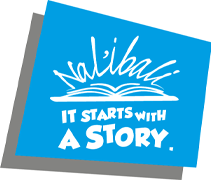Where will you be in ten years’ time? Whether it’s a growing business or growing family, we all make plans for our future. Yet our future selves are either enabled or limited by our broader context. So, what is our national context in a generation’s time?
Results from a global literacy study last week paint a devastating picture. The Progress in International Reading Literacy Study (PIRLS) assessing children’s reading comprehension has placed South African children last in 50 countries.
The stats? 78% of Grade Four learners in South Africa cannot read for basic meaning in any national language. In other words, eight out of every 10 nine-year-olds in South Africa are currently functionally illiterate. This survey presents the socio-economic equivalent of Cape Town’s taps running dry on Day Zero. Simply put, it’s the most urgent wake-up call our country has had on what our future looks like, and we need to respond accordingly.
There’s a reason the PIRLS test targeted Grade Fours. The age is a tipping point: if a child remains functionally illiterate at age nine, there is a strong correlation to them remaining so, which in turn leads to an inevitably steep school drop-out shelf.
A 78% illiteracy rate in Grade Four means the next generation will enter the workforce without these very basic skills needed to raise themselves out of poverty. It means a generation without the capacity to learn, to teach, to lead. More alarmingly, it means a generation unable to pass along literacy to their own children, exacerbating the situation still further with every passing year.
In the United States, there is an alarmingly precise correlation between the number of illiterate third-grade boys and future incarceration statistics (the United States, for reference, scored just 4% on the PIRLS survey). In South Africa, boys have fallen behind to such an extent that they are now a full year of learning behind girls of the same age – the second highest gender gap in the world.
The PIRLS survey also attempted to quantify social inhibitors to education, such as bullying amongst peers. The results? We are also world leaders there, with 42% of South African Grade Fours experiencing bullying weekly (by comparison, 15% of learners reported the same experience in the US and UK).
What kind of future can we build when our children cannot build empathy?
Government is putting urgent plans in place to secure our resources – sustainable water, electricity supply and so on. We all weigh in on these because South Africans care about what our country looks like and we’re willing to make a noise when we feel a lack of leadership on these matters.
Where is the noise here?
If literacy is everybody’s problem, then it’s also everybody’s solution. These results need to be the rallying call to the heart of our nation.
The good news – and there is much of it – is that change can happen. After all, Japan and more recently Chile, turned around their literacy rates by simply making it a holistic national priority.
But how do we start with a similar approach in South Africa? Where do we begin?
Take heart that many of us began a long time ago. NGOs have determinedly been stepping up to the plate, introducing and quietly maintaining extraordinary, effective and targeted initiatives to support literacy development across the country.
Nal’ibali, for example, operates country-wide to spark children’s potential by creating opportunities for children to fall in love with books and stories in home languages as well as English.
Research proves that regular reading and a strong foundation of language in children’s mother tongues are two of the most significant indicators of future academic success – even more than socio-economic status. That’s food for thought in a country where the poverty trap seems inescapable.
We are hardly tackling this problem alone – it takes a nation to nurture a reading culture and Nal’ibali works hand-in-hand with hundreds of partners. Together we’ve seen extraordinary successes in our five years of operation.
We are fighting the odds and winning; helping to root a culture of reading in South Africa by immersing children, caregivers and communities in great and well-told stories in relaxed and meaningful ways, rather than focusing on the mechanical literacy instruction so common in the classroom.
It’s time for us to join forces
We are weaving a web of support and creative solutions that, given enough backing, will catch our learners when they fall through the cracks of the formal education system. Just imagine what we could do if our work was amplified and enthusiastically championed across the country!
Those who can’t in financial or practical terms can still play a vital part, simply by picking up a book. Reading or giving a good book to one child may feel like a tiny act, but the ramifications of these small, everyday actions can have startling consequences down the line.
Stories teach us at a linguistic level – the basic vocabulary, spelling and grammar pour in unconsciously. But stories also teach us at a human level – they help us to imagine worlds and possibilities that are different to the ones we are currently experiencing.
In South Africa, right now, that’s surely a talent that every one of us needs to learn to develop.
